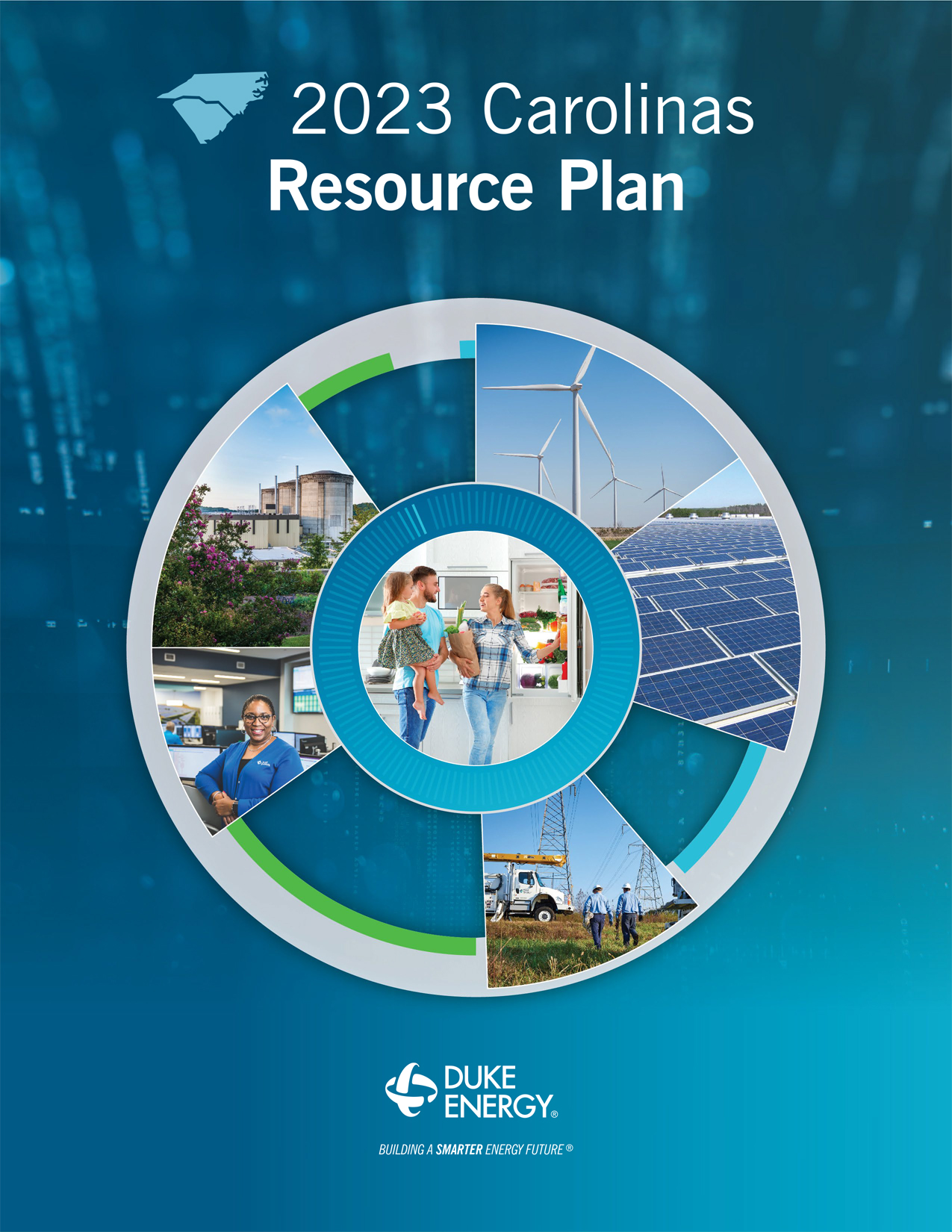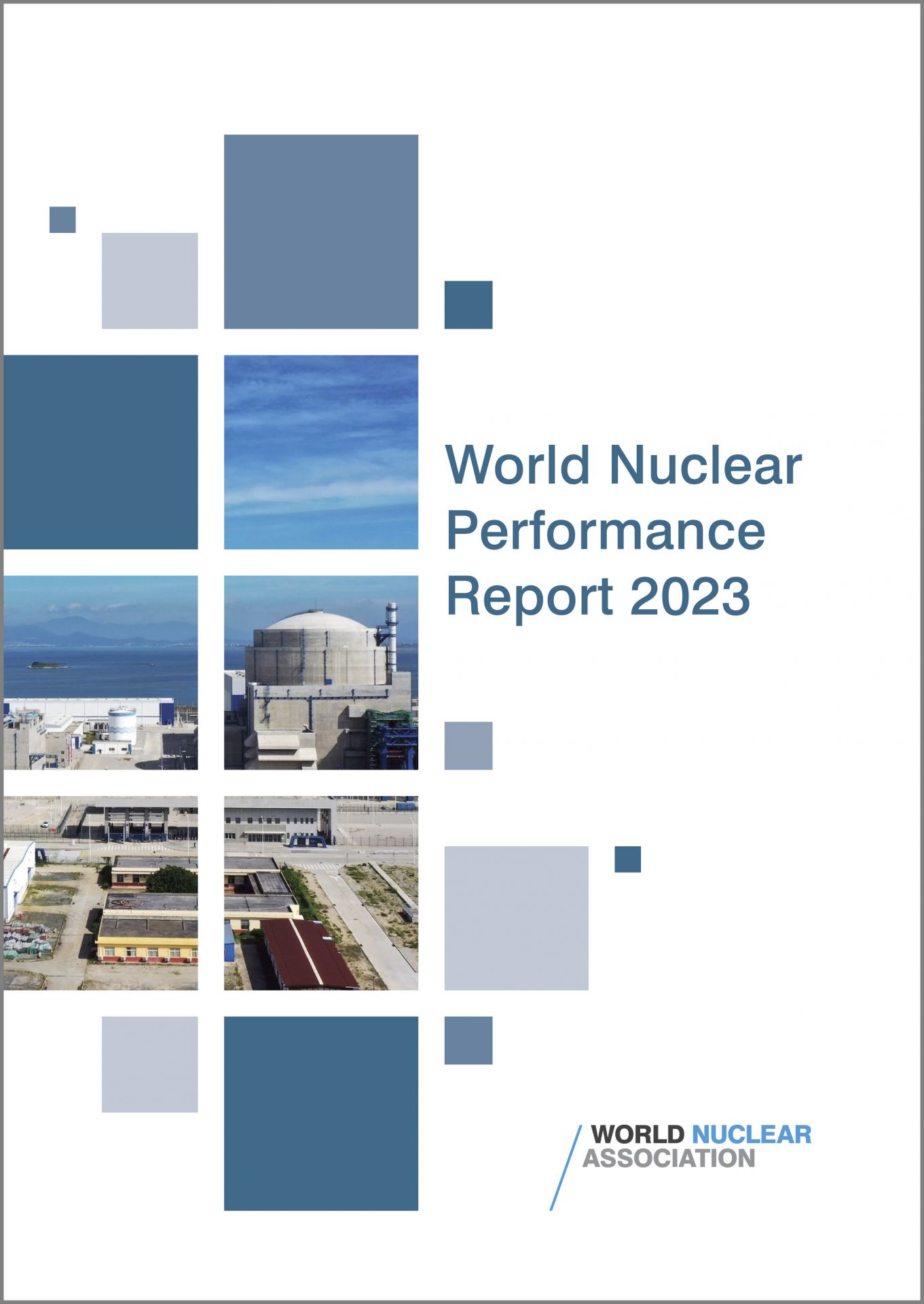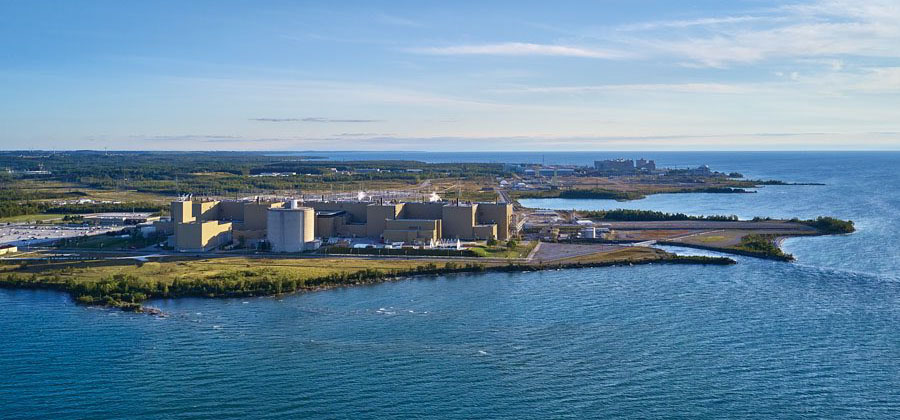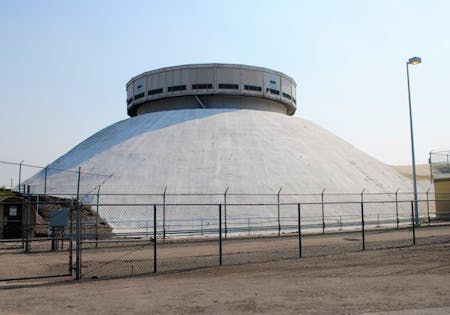Diablo Canyon nuclear power plant. (Photo: PG&E)
A California court has dismissed a lawsuit brought in April by Friends of the Earth (FOE), an inveterate enemy of nuclear power, to derail last year’s state-supported plan to keep the two-unit Diablo Canyon plant running past 2025.
The Beaver Valley nuclear power plant. (Photo: NRC)
The Department Justice earlier this week filed comments with the Federal Energy Regulatory Commission regarding Vistra Corporation’s proposed acquisition of Energy Harbor, the Ohio-based owner and operator of the Beaver Valley, Davis-Besse, and Perry nuclear plants. Echoing misgivings raised in June by PJM Interconnection’s market monitor Monitoring Analytics regarding the possible exercise of undue market power as a result of the deal, the DOJ Antitrust Division’s 16-page document urges FERC to carefully review the proposal to ensure it will not substantially lessen competition and increase wholesale electricity prices in the PJM region.
Conceptual art of the Hermes low-power demonstration reactor. (Image: Kairos Power)
The Nuclear Regulatory Commission staff has completed its final environmental impact statement (FEIS) for Kairos Power’s application to build the Hermes demonstration reactor in Oak Ridge, Tenn., and is advising that the construction permit (CP) be issued.
“After weighing the environmental, economic, technical, and other benefits against environmental and other costs, and considering reasonable alternatives, the NRC staff recommends, unless safety issues mandate otherwise, that the NRC issue the CP to Kairos,” the FEIS states.
The Vogtle-4 reactor cavity in July. (Photo: Georgia Power)
Georgia Power has begun the process of loading fuel into the Vogtle plant’s Unit 4 reactor, the company announced yesterday, marking another pivotal milestone toward commercial operation of the second of the facility’s two new units.
The Gentilly nuclear power plant. (Photo: Hydro-Québec)
Québec government–owned utility Hydro-Québec, Canada’s largest power provider, is looking into the feasibility of restarting Unit 2 at the Gentilly nuclear power plant, various Canadian news outlets reported last week.
The Oskarshamn nuclear power plant in Sweden. (Photo: Daniel Kihlgren)
The Swedish Radiation Safety Authority (SSM) has issued a final report to the Swedish government regarding its investigation into how the regulatory framework for the country’s nuclear power might be improved.
The Bruce nuclear power plant in Ontario, Canada. (Photo: Bruce Power)
Unit 6 at the Bruce nuclear power plant in Kincardine, Ontario, achieved a sustained fission chain reaction over the weekend—a key step in returning the 817-MWe CANDU reactor to commercial operation, Bruce Power announced yesterday.
A rendering of the Sizewell site on the Suffolk coast. Sizewell A and B are to the left and center (respectively) in the image; the section to the right is Sizewell C. (Image: EDF Energy)
The U.K. government recently confirmed a further £170 million (about $216 million) investment of previously allocated funding for development work on the proposed Sizewell C nuclear power plant project in Suffolk, England.
The former Zero-Power Physics Reactor cell at INL’s Materials and Fuels Center could be home to the MCRE. (Photo: INL)
Concept art of the six-module Carbon Free Power Project, to be sited at INL. (Image: NuScale)
CFPP LLC, the limited liability company established by Utah Associated Municipal Power Systems (UAMPS) in 2020 to bring its Carbon Free Power Project to fruition, has applied to the Nuclear Regulatory Commission for a limited work authorization (LWA) to permit certain early project construction activities prior to the issuance of a combined license (COL). In a July 31 news release, CFPP said that should its application be approved, early-scope construction on the small modular reactor project would likely begin in mid-2025.
Vogtle-3 (Photo: Georgia Power)
To the ears of the nuclear community, the news from Georgia Power this morning may sound a bit like “Ode to Joy” from Beethoven’s Ninth: After years of delay, Unit 3 at the Vogtle nuclear power plant has entered commercial operation, becoming the first newly constructed power reactor in the United States in more than 30 years and the nation’s first Westinghouse-supplied Generation III+ AP1000 unit to be placed into service. The new unit joins Vogtle-1 and -2—1,169-MWe four-loop pressurized water reactors that entered commercial operation in the late 1980s.
The Vogtle-4 control room. (Photo: Georgia Power)
The Nuclear Regulatory Commission has authorized Southern Nuclear Operating Company to begin loading fuel into Unit 4 at the Vogtle nuclear expansion site near Waynesboro, Ga., making the unit the second reactor to reach this milestone in the agency’s combined license process—a little less than one year after Vogtle-3. (Prior to 1989, reactors were licensed under a two-step process, requiring both a construction permit and an operating license.)









 The
The 





